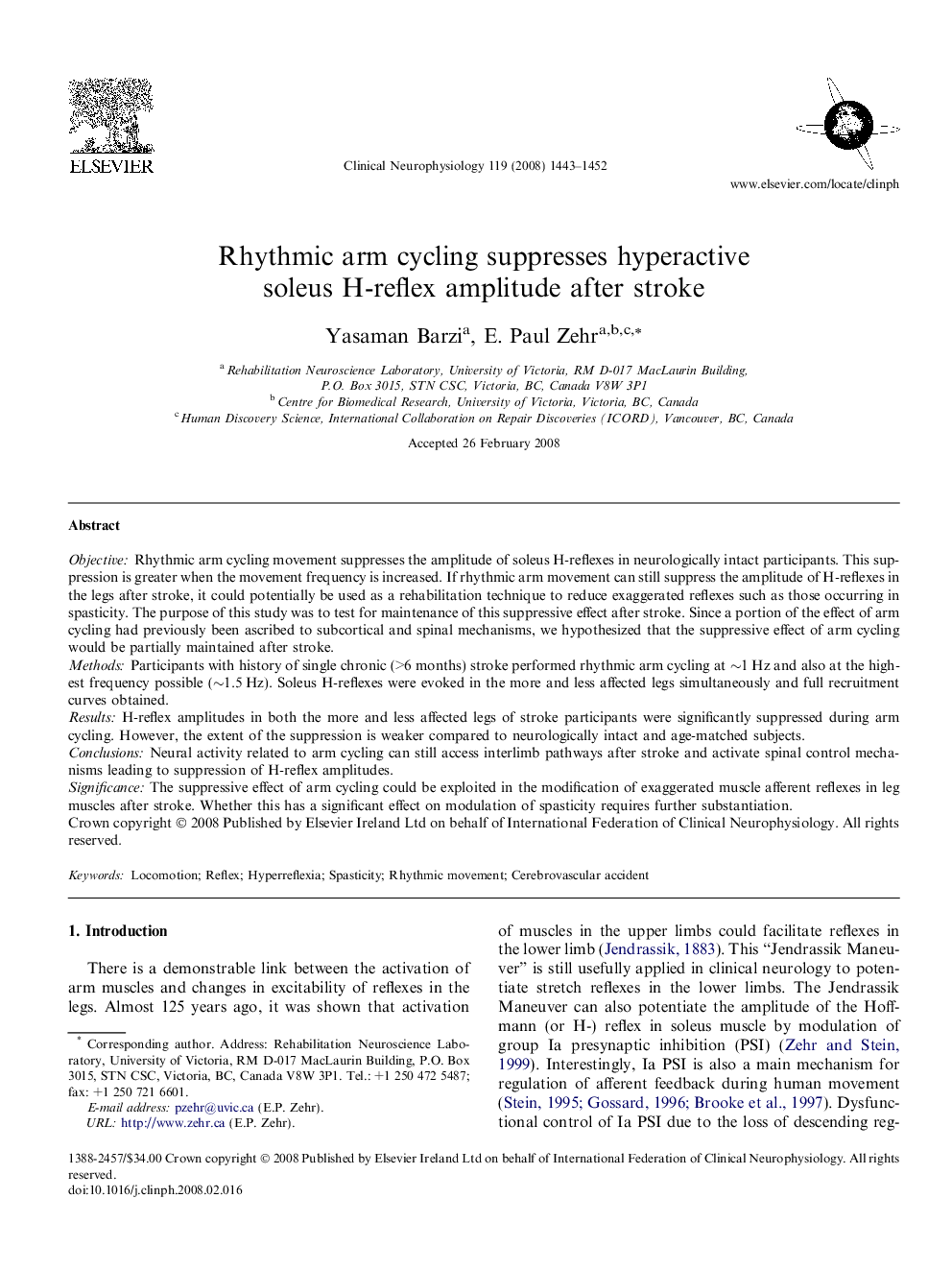| Article ID | Journal | Published Year | Pages | File Type |
|---|---|---|---|---|
| 3047465 | Clinical Neurophysiology | 2008 | 10 Pages |
ObjectiveRhythmic arm cycling movement suppresses the amplitude of soleus H-reflexes in neurologically intact participants. This suppression is greater when the movement frequency is increased. If rhythmic arm movement can still suppress the amplitude of H-reflexes in the legs after stroke, it could potentially be used as a rehabilitation technique to reduce exaggerated reflexes such as those occurring in spasticity. The purpose of this study was to test for maintenance of this suppressive effect after stroke. Since a portion of the effect of arm cycling had previously been ascribed to subcortical and spinal mechanisms, we hypothesized that the suppressive effect of arm cycling would be partially maintained after stroke.MethodsParticipants with history of single chronic (>6 months) stroke performed rhythmic arm cycling at ∼1 Hz and also at the highest frequency possible (∼1.5 Hz). Soleus H-reflexes were evoked in the more and less affected legs simultaneously and full recruitment curves obtained.ResultsH-reflex amplitudes in both the more and less affected legs of stroke participants were significantly suppressed during arm cycling. However, the extent of the suppression is weaker compared to neurologically intact and age-matched subjects.ConclusionsNeural activity related to arm cycling can still access interlimb pathways after stroke and activate spinal control mechanisms leading to suppression of H-reflex amplitudes.SignificanceThe suppressive effect of arm cycling could be exploited in the modification of exaggerated muscle afferent reflexes in leg muscles after stroke. Whether this has a significant effect on modulation of spasticity requires further substantiation.
